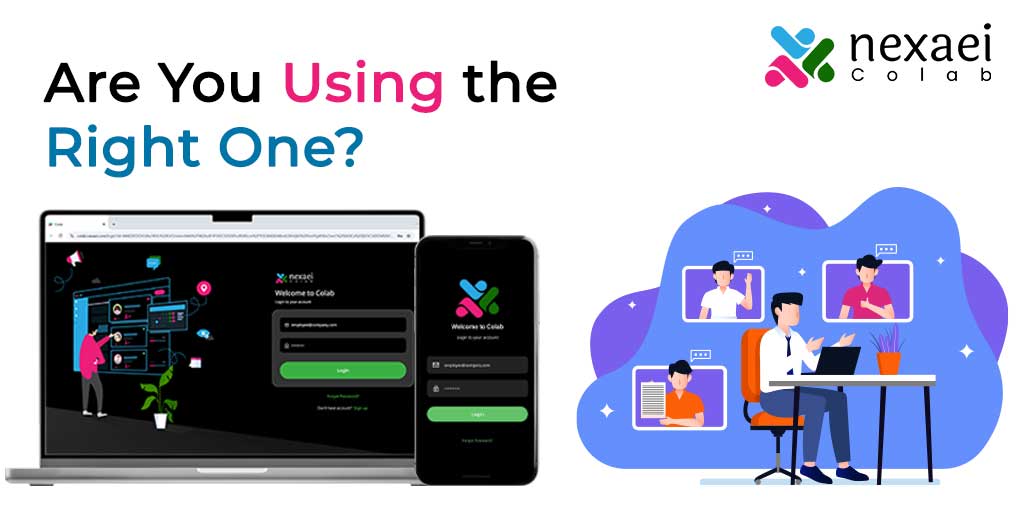McKinsey’s research shows that CxOs that unify teams and drive cross-functional collaboration and cross-team collaboration are 1.4x times more likely to build accountable relationships. Read on to know why it’s so important for employee engagement and a holistic collaborative culture – and how you can make it an organizational habit.
Cross-Functional Collaboration and Cross-Team Collaboration:
Cross-functional collaboration is a strategic approach where individuals from diverse departments or functional backgrounds within your organization collaborate to achieve shared objectives. It transcends traditional organizational silos by fostering an environment where expertise, ideas, and resources are shared freely across boundaries.
This collaborative culture is marked by several key elements: first, it brings together individuals with different areas of expertise, such as marketing, finance, engineering, and operations, allowing for a better understanding of complex issues. Second, cross-functional teams operate with shared goals, aligning the efforts of team members toward a common purpose, and increasing employee engagement.
Third, effective communication is fundamental, ensuring that information flows seamlessly between team members, enabling coordinated action and decision-making. Additionally, roles within cross-functional teams are often flexible, allowing you to contribute your skills and knowledge beyond your primary areas of expertise.
Moreover, decision-making in such teams is collaborative, drawing upon the diverse perspectives and insights of all stakeholders.
Read More: The Future of AI-Powered Enterprise Collaboration System- Nexaei
The Value of Cross-Functional Collaboration in Cross-Team Environments:
Today, cross-functional collaboration is not just beneficial – it’s essential for thriving team enterprises like yours. Here’s why:
1. Enhance innovation
When diverse teams come together, they bring a plethora of perspectives, expertise, and ideas to the table. This amalgamation sparks innovation, driving your company to develop groundbreaking solutions and stay ahead in the market.
2. Optimize problem solving
Cross-functional teams leverage the collective intelligence of members from different departments. This enables them to approach challenges from various angles, leading to more comprehensive problem-solving strategies and quicker resolutions.
3. Improve decision making
By incorporating insights from multiple disciplines, you ensure that decisions are well-rounded and consider various implications. This reduces the risk of oversight and enhances the quality of strategic choices made within your organization.
4. Accelerate learning and development
Collaborating across functions provides employees with opportunities to broaden their skill sets and deepen their understanding of different areas of the business. This continuous learning fosters personal growth and cultivates a workforce equipped to adapt to evolving demands.
5. Increase efficiency and productivity
Streamlining workflows across departments eliminates silos and bureaucratic bottlenecks, allowing tasks to be executed more smoothly and swiftly. As a result, projects progress at a faster pace, enhancing overall productivity within your organization.
6. Drive employee engagement
Cross-functional collaboration promotes a sense of belonging and purpose among your workforce. When employees collaborate across departments, they feel valued for their contributions and connected to the broader goals of the organization, leading to higher levels of engagement and motivation.
7. Build a collaborative culture
Encouraging collaboration creates a culture where teamwork is celebrated, and individuals are empowered to share ideas openly. This not only strengthens internal relationships but also cultivates a supportive environment where colleagues trust and respect one another.
Read More: 5 Reasons Your Organization Should Invest in a Top-tier Collaboration Tool
How Cross Team Collaboration Accelerates Innovation and Learning:
To promote cross-functional collaboration within your company, it’s essential that you first cultivate a collaborative culture – one that values teamwork and collective problem-solving. A great way to do this is to create opportunities for interdepartmental interaction and communication.
Encourage cross-functional meetings, brainstorming sessions, and workshops where team members from different departments can exchange ideas. Platforms such as digital collaboration tools or project management software also play a crucial role, as we’ll explain. They facilitate coordination across teams, regardless of their physical location.
Additionally, incentives can act as a powerful motivator for employees to actively engage in cross-functional initiatives. Recognize and reward collaborative efforts, whether through formal recognition programs, performance evaluations, or incentives tied to project outcomes.
Encourage leaders to lead by example by actively participating in cross-functional activities and demonstrating a willingness to listen to input from all team members. Managers need to create an environment where everyone feels heard, valued, and empowered. This strengthens interdepartmental relationships, laying the foundation for deeper employee engagement and inclusion.
Read More: The Future of AI-Powered Enterprise Collaboration and its Impact on Business Growth
Using Tech Tools to Level Up Your Cross-Functional Collaboration Capabilities
Cross-functional collaboration doesn’t happen in isolation. You need a strong collaborative culture as well as the right toolkit that actually encourages employee engagement in collaboration. The tool you choose needs to have the following features:
- Unified communication: Ensure the platform offers integrated messaging, video conferencing, and voice calling capabilities to facilitate real-time communication among team members.
- Document sharing and collaboration: Look for features that allow for easy sharing, editing, and co-authoring of documents, spreadsheets, and presentations in a collaborative workspace.
- Task management: This includes task assignment, progress tracking, and deadline management, to keep cross-functional projects organized and on track.
- Integration capabilities: Seek out a platform that integrates seamlessly with other essential tools and applications your teams use, such as email, calendars, and project management software.
- Customizable workspaces: Opt for a platform that allows users to create customizable workspaces and channels tailored to specific projects or teams.
- Search and knowledge management: Features like tagging and categorization will help users quickly find relevant information and resources across cross-functional teams.
Discover Colab, the Cross-team Collaboration Enabler
Team collaboration platforms can be the ultimate catalyst for cross-functional collaboration in your company. These tools provide a centralized hub where teams from different departments can seamlessly communicate, share documents, and collaborate on projects in real-time. Features like chat, video conferencing, and file sharing streamline communication and break down silos, enabling teams to work together more efficiently regardless of their physical location.
That’s why we offer enterprises the complete cross-functional & cross-team collaboration tool, Colab. By harnessing its power, you not only foster a collaborative culture but also, drive innovation, employee engagement, and collective motivation.
Speak with our experts to demo Colab today!







